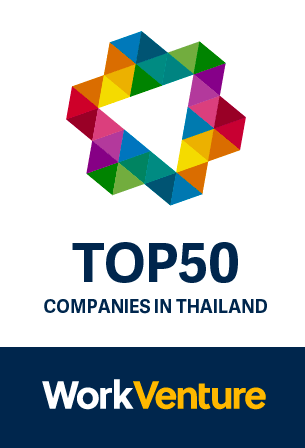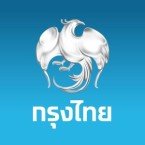ประกาศงานนี้หมดอายุแล้ว
Technical Lead
ที่ธนาคารกรุงไทย จำกัด (มหาชน)Position : Technical Lead
Role and responsibilities:
- Focus on in-depth technical knowledge and delivery experience, and less on solution architecture design
- Develop detailed-level design document that will be used as basis for guiding developers as part of sprint implementation (C4 at level 3 and 4, and UML artifacts such as sequence diagram)
- Provide expertise knowledge on Git, including common commands and workflows (e.g., branching, merging, rebasing, resolving conflicts, using pull requests).
- Provide advise on Git workflows and strategy in a collaborative environment, such as Gitflow, Feature Branching, Trunk-Based Development, or similar.
- Design and implement efficient branching strategies that suit agile teams, such as managing long-lived branches for releases, handling feature branches, and integrating continuous delivery pipelines.
- Provide advise on merge conflicts, how to resolve them effectively, and experience in performing complex merges or rebases without losing code integrity.
- Mange and review pull requests, understanding best practices for code reviews, and ensuring that code reviews are done systematically to maintain code quality. Able to perform technical review and provide feedback/improvement on solution architecture down to the coding level.
- Lead the development team, providing technical guidance, setting coding standards, and overseeing the team’s daily work. They are focused on hands-on leadership in software development tasks, including code quality, performance, and adherence to design principles and solution architecture developed by Solution Architect. Technical Lead is also responsible for resolving team’s impediments during Sprints execution.
- Lead development squads or teams in an agile environment, ensuring efficient collaboration between frontend, backend, DevOps, and product teams.
- Provide advoce on integration source code management with CI/CD pipelines, automating tests, builds, and deployments based on commits and pull requests.
- Identify and resolve complex technical problems such as performance/security issues.
- Ensure code quality through constructive code reviews, testing, and conformance to defined standards and best practices.
Qualifications
Solution Architecture Design and Modeling
- Knowledge on application design patterns, standards, and application development methodology (ex. RESTful API design principles, Microservices architecture, DDD, TDD, Cloud-native application design, Scalability and Performance optimization, etc.)
- Able to document solution architecture and design artifacts (ex. C4 & UML) and communicate to stakeholders (both upper and lower levels)
- Able to develop implementation plan, effort estimation, identified technical risks with mitigations.
- Experienced end-to-end solution delivery as solution architect or application architect role (from Inception/discovery phase to go live, and a plus for post-production support)
Technical Proficiency
- Minimum 10 years experienced in related IT Technology or Leading IT Company.
- Must be able to understand technical details of relevant technology and tools (ex. Frontend development framework and programming languages, Backend development framework and programming languages, CI/CD pipeline, DevSecOps toolchain, Source Code Management Strategy, Cloud infrastructure and network, Container and Orchestration, APM & Observability, etc.). Some candidate may have some specific skills that need to be probed specifically ex. Application Modernization, Enterprise Architecture, solution leveraging GenAI, Observability, etc.
- Still able to perform coding, code review, setup initial project repository and source code management strategy will be a Plus, although not mandatory. Having experience developing a core framework/common services will be a Plus+Plus. However, at minimum must be able to provide feedback on code review and source code management strategy.
Business Architecture knowledge and experience
- Knowledge on financial sector, especially on banking industry. Understanding of banking products, processes, regulations, and banking IT systems
- Familiarity with banking industry regulations such as PCI-DSS, AML, KYC, PDPA.
- Experience design and implement technical solution based on business domain above.
- Requirement analysis skill. Able to clarify and analyze requirement. Then, define and recommend high-level technical solution that correspond to the requirement.
Others
- Experienced with Agile practice (must have experience leading implementation project using Agile practice). Experience with planning sprints, managing team deliverables, and ensuring alignment with business goals.
- Soft skills
- Proficient in English and Thai for both written and verbal.
- Good presentation skills. Able to communicate effectively with clients, stakeholders, and other team members. Able to explain technical concepts to non-both technical and non-technical audiences based on their knowledge level. Able to perform complex technical discussions with non-technical stakeholders
- Good technical writing and the ability to structure documents logically. Able to produce clear, concise, and comprehensive technical documents.
- Problem solving skill: Probed from experienced designing solution architecture ex. architecture decisions, etc.
- Having Consultant/Service Provider experience will be a plus. But at minimum need to understand role of consultant/service provider when working in a project.
- Leadership and Collaboration:
- Experienced as solution architect role leading end-to-end delivery phases.
- Team leading (coaching/mentoring, define/assign tasks, status tracking)
- Experienced people manager will be a plus.
- Good working attitude, mature, can handle tough situation/client.
" ท่านสามารถอ่านและศึกษานโยบายความเป็นส่วนตัวของธนาคารกรุงไทย จำกัด (มหาชน) ที่ https://krungthai.com/th/content/privacy-policy ทั้งนี้ ธนาคารไม่มีเจตนาหรือความจำเป็นใดๆ ที่จะประมวลผลข้อมูลส่วนบุคคลที่มีความอ่อนไหว รวมถึงข้อมูลที่เกี่ยวข้องศาสนาและ/หรือหมู่โลหิต ซึ่งอาจปรากฏอยู่ในสำเนาบัตรประจำตัวประชาชนของท่านแต่อย่างใด ดังนั้น กรุณาอย่าอัปโหลดเอกสารใดๆ รวมถึงสำเนาบัตรประจำตัวประชาชน หรือกรอกข้อมูลส่วนบุคคลที่มีความอ่อนไหวหรือข้อมูลอื่นใด ซึ่งไม่เกี่ยวข้องหรือไม่จำเป็นสำหรับวัตถุประสงค์ในการสมัครงานไว้บนเว็บไซต์ นอกจากนี้ กรุณาดำเนินการให้แน่ใจว่าได้ดำเนินการลบข้อมูลส่วนบุคคลที่มีความอ่อนไหว (ถ้ามี) ออกจากเรซูเม่และเอกสารอื่นใดก่อนที่จะอัปโหลดเอกสารดังกล่าวไว้บนเว็บไซต์แล้วด้วย ทั้งนี้ ธนาคารมีความจำเป็นต้องเก็บรวบรวมข้อมูลส่วนบุคคลเกี่ยวกับประวัติอาชญากรรมของท่านเพื่อบรรลุวัตถุประสงค์ในการพิจารณารับบุคคลเข้าทำงาน หรือการตรวจสอบคุณสมบัติ ลักษณะต้องห้าม หรือพิจารณาความเหมาะสมของบุคคลที่จะให้ดำรงตำแหน่ง ซึ่งการให้ความยินยอมเพื่อเก็บรวบรวม ใช้ หรือเปิดเผยข้อมูลส่วนบุคคลเกี่ยวกับประวัติอาชญากรรมของท่านมีความจำเป็นสำหรับการเข้าทำสัญญาและการได้รับการพิจารณาตามวัตถุประสงค์ดังกล่าวข้างต้น ในกรณีที่ท่านไม่ให้ความยินยอมในการเก็บรวบรวม ใช้ หรือเปิดเผยข้อมูลส่วนบุคคลเกี่ยวกับประวัติอาชญากรรม หรือมีการถอนความยินยอมในภายหลัง ธนาคารอาจไม่สามารถดำเนินการเพื่อบรรลุวัตถุประสงค์ดังกล่าวข้างต้นได้ และอาจ ทำให้ท่านสูญเสียโอกาสในการได้รับการพิจารณารับเข้าทำงานกับธนาคาร "
ประสบการณ์ที่จำเป็น
- ไม่ระบุประสบการณ์ขั้นต่ำ
เงินเดือน
- สามารถต่อรองได้
สายงาน
- ผู้บริหารอาวุโส
ประเภทงาน
- งานประจำ
เกี่ยวกับบริษัท
ธนาคารกรุงไทย จำกัด (มหาชน) (KTB) ก่อตั้งเมื่อวันที่ 14 มีนาคม พ.ศ. 2509 เป็นสถาบันการเงินของรัฐในประเทศไทย เกิดจากการควบรวมกิจการระหว่างธนาคารเกษตรและธนาคารมณฑล ธนาคารดำเนินงานภายใต้การกำกับดูแลของกระทรวงการคลัง ให้บริการทางการเงินที่ครอบคลุม ทั้งการธนาคารสำหรับอง ...
ร่วมงานกับเรา: Krungthai Bank is dedicated to developing the competencies of its employees by providing opportunities for self-development, career growth, financial stability, and social responsibility. The bank believes that the progressive competency of its employees drives sustainable o ...
สวัสดิการ
- ทำงาน 5 วัน/สัปดาห์















